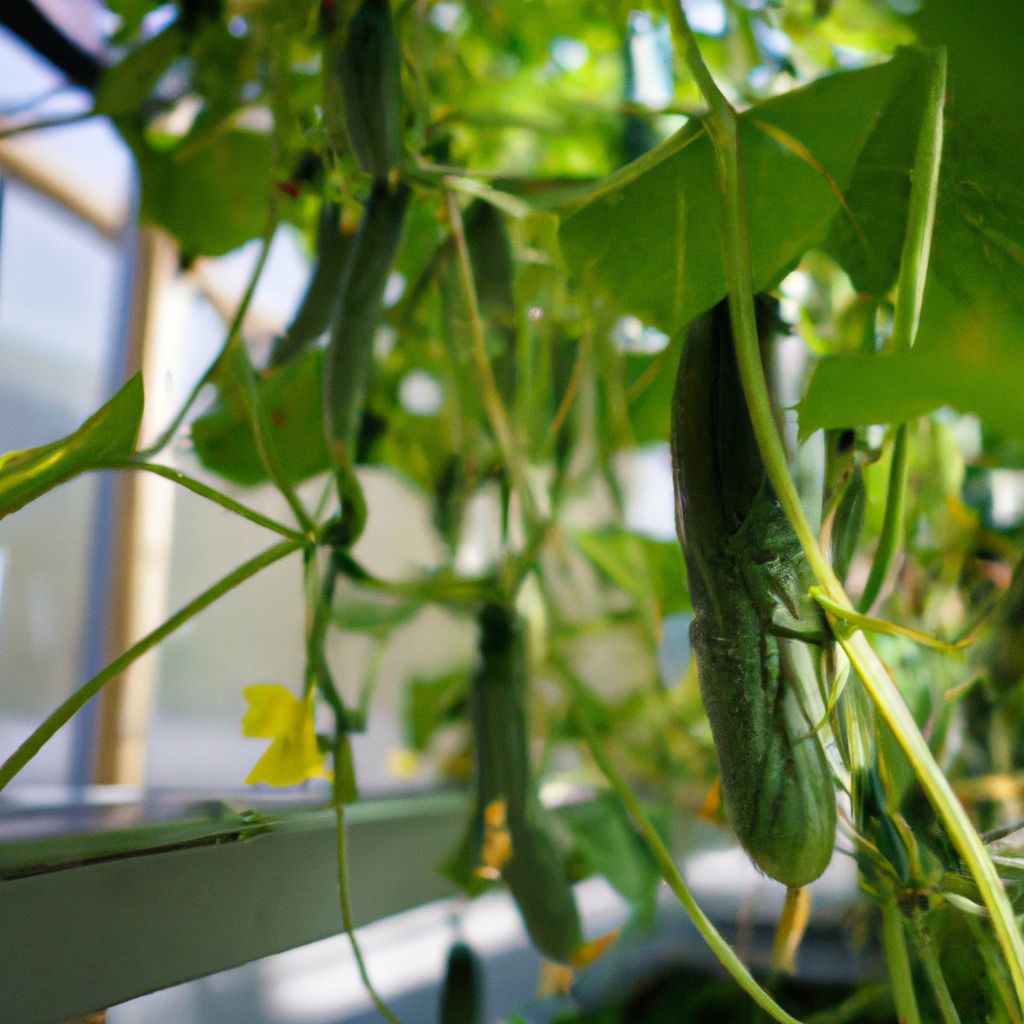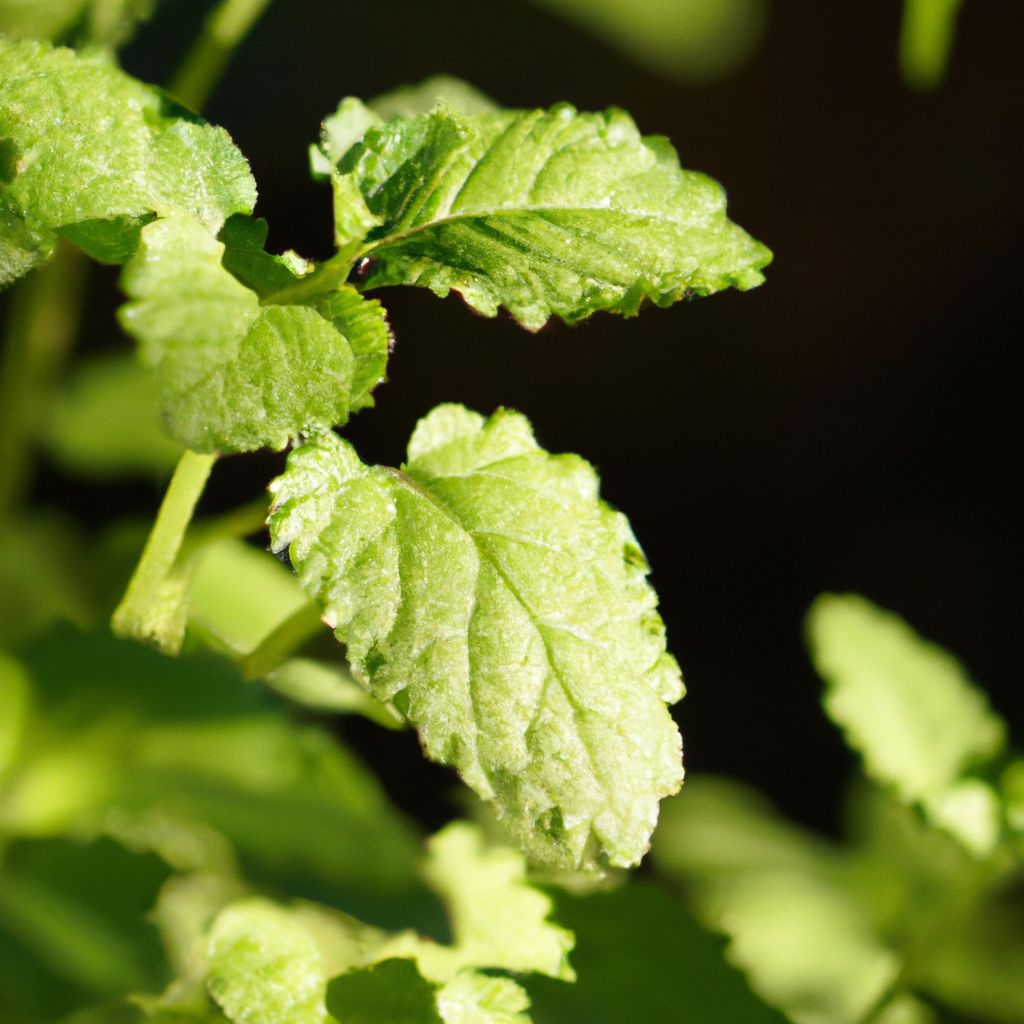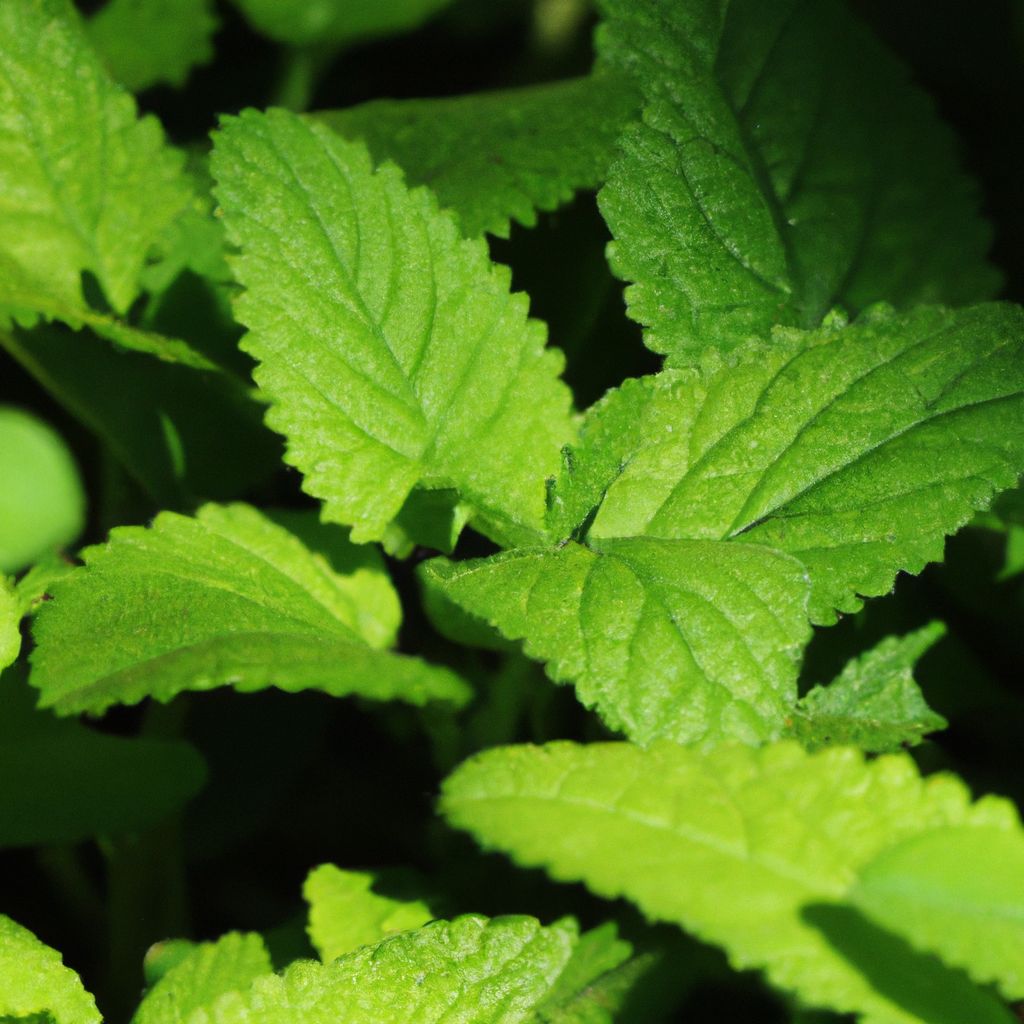Imagine a sustainable, self-contained ecosystem where crisp, flavorful cucumbers thrive alongside a thriving population of fish. Welcome to the world of aquaponic gardening, where you can grow delicious cucumbers without soil, harsh chemicals, or excessive water usage. This comprehensive guide will equip you with the knowledge and strategies to fully understand what is needed for growing cucumbers in an aquaponic garden, ensuring a bountiful harvest of this refreshing and versatile vegetable.
Unveiling the Benefits of Aquaponic Cucumber Cultivation
Growing cucumbers in an aquaponic garden offers numerous advantages over traditional farming methods. First and foremost, the nutrient-rich water in the system provides an ideal environment for cucumber plants to flourish, promoting vigorous growth and abundant yields. The water is enriched by the waste produced by the fish, which serves as a natural fertilizer, providing essential nutrients like nitrogen, phosphorus, and potassium.
Additionally, aquaponic systems conserve water by recirculating and reusing it, making them an eco-friendly choice. These closed-loop systems can reduce water consumption by up to 90% compared to conventional agriculture, making them particularly suitable for areas with limited water resources or drought conditions.
Pest and Disease Control in Aquaponic Systems
Pest and disease control is another significant benefit of aquaponic gardening. The controlled environment and balanced ecosystem mitigate the need for harmful pesticides or chemicals, ensuring your cucumbers are free from residues and safe for consumption. The presence of beneficial bacteria and the lack of soil-borne pathogens help to minimize the risk of pests and diseases affecting the crop.
Year-Round Cultivation and Higher Yields
Furthermore, aquaponic systems allow for year-round cultivation, providing a continuous supply of fresh cucumbers regardless of the outdoor climate. By maintaining optimal growing conditions within the controlled environment, you can enjoy a steady harvest of cucumbers throughout the year, even in areas with harsh winters or extreme weather conditions.
Moreover, aquaponic gardening often yields higher cucumber production compared to traditional farming methods. The optimized growing conditions, nutrient-rich water, and controlled environment contribute to healthier plants and increased yields. This means that you can maximize your cucumber harvest while utilizing a relatively small space, making aquaponics an attractive option for urban gardeners or those with limited growing areas.
Space Optimization in Aquaponic Systems
Lastly, aquaponic systems offer space optimization by allowing vertical growing techniques, such as trellising or hanging baskets. This efficient use of space makes it possible to cultivate a substantial amount of cucumbers in a compact area, making aquaponics an excellent choice for those with limited outdoor space or small indoor growing areas.
Choosing the Right Aquaponic System for Cucumber Cultivation
Selecting the appropriate aquaponic system is crucial for successful cucumber cultivation. When choosing your system, consider factors such as size, type, nutrient requirements, water circulation, pH levels, and temperature control.
System Size and Type
The size of your aquaponic system should be proportionate to your desired cucumber yield and the available space. Cucumbers are vigorous climbers, and their vines require ample space to spread. A larger system will accommodate more cucumber plants and provide greater yield potential, but it will also require more maintenance and resources.
There are several types of aquaponic systems to choose from, each with its own advantages and considerations. The most common types include:
Media-based Systems
These systems use a growing medium, such as gravel, clay pebbles, or coconut coir, to support the plant roots. The nutrient-rich water from the fish tank is circulated through the growing beds, providing the necessary nutrients for plant growth.
Nutrient Film Technique (NFT) Systems
In these systems, the plant roots are suspended in a shallow stream of nutrient-rich water that continuously flows through the growing channels. NFT systems are space-efficient and suitable for fast-growing vegetables like cucumbers.
Deep Water Culture (DWC) Systems
These systems involve growing plants in a raft or floating platform suspended on top of a fish tank or reservoir. The plant roots are submerged in the nutrient-rich water, making DWC systems highly efficient in terms of water usage and nutrient delivery.
Each system type has its own advantages and considerations, so it’s essential to evaluate your specific needs and preferences before making a choice.
Nutrient Requirements and Water Circulation
Cucumber plants have specific nutrient requirements that must be met for optimal growth and production. The waste produced by the fish in your aquaponic system serves as a natural source of essential nutrients, such as nitrogen, phosphorus, and potassium. However, it’s crucial to monitor and adjust the nutrient levels to ensure they remain within the ideal range for cucumber cultivation.
Proper water circulation is essential in an aquaponic system to provide adequate oxygenation and nutrient distribution. Cucumber plants thrive in well-aerated water, and sufficient water movement ensures that the roots receive the necessary oxygen and nutrients. Consider incorporating a pump or air stone to facilitate water circulation and oxygenation in your system.
pH Levels and Temperature Control
Cucumber plants prefer a slightly acidic to neutral pH level within the range of 6.0 to 7.0. Maintaining the proper pH balance is crucial for nutrient availability and overall plant health. Regular pH monitoring and adjustments using pH up or down solutions may be necessary to maintain the optimal range.
Cucumbers thrive in warm temperatures, ideally between 70°F and 85°F (21°C to 29°C). Extreme temperatures can negatively impact plant growth, fruit development, and overall productivity. Depending on your climate and the location of your aquaponic system, you may need to implement temperature control measures, such as greenhouse structures, heating, or cooling systems, to maintain the ideal temperature range.
By carefully considering these factors and selecting an aquaponic system that meets the specific needs of cucumber plants, you’ll be well on your way to achieving a successful and bountiful harvest.
Selecting Suitable Cucumber Varieties for Aquaponic Gardening
Not all cucumber varieties are created equal when it comes to aquaponic gardening. Choosing the right varieties is crucial for ensuring optimal growth, productivity, and adaptation to the unique conditions of an aquaponic system. Consider the following factors when selecting cucumber varieties for your aquaponic garden:
Growth Habit and Pollination Requirements
Cucumber plants can have either a vining or bush growth habit. Vining varieties, also known as indeterminate cucumbers, produce long vines that continue growing and producing fruits throughout the season. These varieties are well-suited for aquaponic systems as they can be trained to climb vertically, maximizing space utilization. Bush varieties, or determinate cucumbers, have a more compact growth habit and produce their fruit within a shorter period, making them suitable for smaller systems or container gardening.
Some cucumber varieties require pollination by bees or other insects to produce fruits, while others are parthenocarpic, meaning they can produce fruit without pollination. If you’re growing cucumbers in a controlled environment or greenhouse, parthenocarpic varieties may be the best choice, as they can produce fruits without the need for manual pollination or introducing pollinators.
Temperature Tolerance and Disease Resistance
Different cucumber varieties have varying temperature preferences and tolerances. Some varieties thrive in cooler temperatures, while others perform better in warmer conditions. Consider the temperature range of your aquaponic system and choose varieties that are well-suited for those conditions to ensure optimal growth and fruit production.
In an aquaponic system, disease and pest resistance is crucial for maintaining healthy plants and minimizing the need for chemical interventions. Look for cucumber varieties that have been developed or bred for resistance to common diseases and pests, such as powdery mildew, downy mildew, cucumber mosaic virus, or cucumber beetles.
Harvest Time and Popular Varieties
Depending on your preferences and market demands, you may want to consider the harvest time of different cucumber varieties. Some varieties mature earlier, allowing for earlier consumption or marketability, while others have a longer growing season, providing a more extended harvest period.
Popular cucumber varieties for aquaponic gardening include Beit Alpha cucumbers, which are parthenocarpic and well-suited for greenhouse cultivation, as well as miniature or pickling cucumbers, which are compact and prolific producers. Hybrid cucumber varieties, such as Diva, Tasty Green, or Corinto, are also popular choices for their disease resistance, high yields, and adaptability to various growing conditions.
By carefully selecting cucumber varieties that meet your specific requirements and preferences, you’ll be well-equipped to maximize the success of your aquaponic cucumber cultivation.
Setting Up the Growing Bed for Cucumber Plants
Proper preparation of the growing bed is essential for successful cucumber cultivation in an aquaponic system. Follow these steps to create an optimal environment for your cucumber plants to thrive:
Preparing the Growing Bed
- Clean and level the growing bed: Remove any debris, weeds, or existing plants from the designated growing area. Ensure the surface is level to promote even water distribution and prevent water pooling.
- Incorporate organic matter: Enrich the growing medium by adding organic matter, such as compost or well-aged manure. This will improve soil structure, water-holding capacity, and nutrient availability.
- Install a trellis or support system: Cucumber plants require vertical support to accommodate their climbing growth habit. Install a sturdy trellis, cage, or support structure made of materials like bamboo, wire mesh, or wooden frames.
- Ensure proper drainage: Adequate drainage is crucial to prevent waterlogging and root rot. Create drainage holes or use a well-draining growing medium like gravel or clay pebbles.
- Set up irrigation: Establish an efficient irrigation system, such as drip lines or a watering schedule, to ensure consistent moisture levels for your cucumber plants.
Planting Cucumber Seeds and Seedlings
After preparing the growing bed, it’s time to introduce the cucumber seeds or seedlings into your aquaponic system. Follow these steps for a successful planting process:
Germinating Cucumber Seeds
- Select high-quality cucumber seeds suitable for aquaponic cultivation.
- Pre-soak the seeds in water for 24 hours to soften the seed coat and promote faster germination.
- Prepare a germination tray with a moist growing medium, such as perlite or vermiculite.
- Sow the pre-soaked cucumber seeds evenly spaced on the surface of the germination tray.
- Keep the germination tray in a warm, well-lit area, and mist regularly to maintain moisture.
- Monitor for seedling emergence, which typically occurs within 7-10 days.
Transplanting Cucumber Seedlings
- Carefully remove the seedlings from their original containers.
- Gently loosen the roots to encourage proper growth.
- Create planting holes in the growing bed, spaced according to the recommended distance for the cucumber variety.
- Position the seedlings in the holes, ensuring the roots are spread out and not tangled.
- Cover the roots with the growing medium.
- Water the transplanted seedlings thoroughly to help them establish.
- Monitor the seedlings closely during the first few days, ensuring they adjust well to their new environment.
Proper spacing is essential for cucumber plants to thrive in an aquaponic system. Generally, it’s recommended to space cucumber plants 12-18 inches apart in rows, with 5-6 rows per growing bed. This spacing allows for adequate air circulation, light penetration, and nutrient distribution, while also accommodating the extensive root system and vining growth habit of cucumber plants.
Caring for Cucumber Plants in an Aquaponic System
Once your cucumber plants are established in the aquaponic system, providing the right care and maintenance is crucial for ensuring a bountiful harvest. Follow these guidelines to nurture your cucumber plants and promote healthy growth:
Providing Proper Lighting and Temperature
Cucumber plants require ample sunlight for photosynthesis and optimal growth. In an aquaponic system, it’s recommended to provide at least 6-8 hours of direct sunlight per day. If natural sunlight is insufficient, you can supplement with grow lights designed for plant cultivation.
Maintain a temperature range of 70°F to 85°F (21°C to 29°C) for optimal cucumber growth. Extreme temperatures can stress the plants, leading to reduced yields or even plant death. Use heating or cooling systems, as well as insulation or shade structures, to regulate the temperature in your aquaponic system.
Supplying Sufficient Nutrients
Cucumber plants require a balanced supply of essential nutrients for healthy growth and fruit production. The fish waste in your aquaponic system serves as a natural source of nutrients, but it’s crucial to monitor and adjust the nutrient levels as needed.
Regularly test the water for levels of nitrogen, phosphorus, potassium, and other essential nutrients. If nutrient deficiencies are detected, you can supplement with organic fertilizers or adjust the fish feed to increase the nutrient output.
Managing Water Quality and pH Levels
Maintaining optimal water quality and pH levels is crucial for the health and productivity of your cucumber plants. Regularly test the water for parameters such as dissolved oxygen, ammonia, nitrite, and nitrate levels. These factors can affect nutrient availability and plant growth.
Cucumber plants thrive in a slightly acidic to neutral pH range of 6.0 to 7.0. Use pH test kits or meters to monitor the pH levels and make adjustments using pH up or down solutions as necessary.
Additionally, ensure proper water circulation and oxygenation in your aquaponic system. Cucumber roots require well-aerated water to uptake nutrients effectively and prevent root rot or other issues caused by stagnant water.
Supporting Vertical Growth
Cucumber plants are natural climbers and benefit from vertical support structures. Install trellises, stakes, or cages in your aquaponic system to encourage upward growth and prevent the vines from sprawling on the ground.
As the cucumber plants grow, gently guide the vines to climb the support structures, using soft plant ties or clips to secure them in place. This not only maximizes space utilization but also improves air circulation, light penetration, and fruit development.
By following these guidelines and providing the necessary care, you’ll be well on your way to a successful cucumber harvest in your aquaponic garden.
Harvesting and Enjoying Fresh Cucumbers
As your cucumber plants mature and begin producing fruits, it’s important to know when and how to harvest them properly. Here are some tips for identifying ripe cucumbers and harvesting techniques:
Signs of Cucumber Readiness for Harvest
- Size: Ripe cucumbers will reach the recommended size for the specific variety you’re growing. Check the seed packet or variety description for the ideal size.
- Color: Mature cucumbers will have a deep green color, although some varieties may develop a slight yellow or white tinge when fully ripe.
- Firmness: Gently squeeze the cucumber. It should feel firm and crisp, with no soft spots or wrinkles.
- Appearance: Look for cucumbers with a smooth, uniform shape and a well-defined stem end.
- Taste test: If you’re unsure, carefully take a small taste. Ripe cucumbers should have a refreshing, slightly sweet flavor.
Proper Harvesting Techniques
- Use clean, sharp pruning shears or a knife to cut the cucumber from the vine, leaving a small stem attached.
- Avoid twisting or pulling the cucumber, as this can damage the plant and reduce future yields.
- Harvest cucumbers regularly, at least every 2-3 days, to encourage continuous production.
- Handle the harvested cucumbers gently to prevent bruising or damage.
- Store freshly harvested cucumbers in the refrigerator or a cool, shaded area until ready for use.
Delicious Ways to Enjoy Fresh Cucumbers
With their crisp texture and refreshing flavor, cucumbers are a versatile addition to a variety of dishes and beverages. Here are some delicious ways to enjoy your fresh, homegrown cucumbers:
- Cucumber salads: Thinly slice or chunk cucumbers and combine them with tomatoes, onions, feta cheese, and a light vinaigrette dressing for a refreshing summer salad.
- Cucumber sandwiches: Layer thinly sliced cucumbers with cream cheese or hummus on bread or crackers for a light and satisfying snack.
- Cucumber water: Infuse fresh water with sliced cucumbers and mint or lemon for a hydrating and flavorful beverage.
- Cucumber gazpacho: Blend cucumbers with tomatoes, bell peppers, garlic, and olive oil for a chilled, refreshing soup.
- Cucumber pickles: Preserve your cucumber harvest by pickling them in a brine solution with your favorite spices and herbs.
- Cucumber rolls: Use thinly sliced cucumbers as a healthy alternative to rice paper or seaweed wraps for sushi rolls filled with fresh vegetables or proteins.
With their versatility and nutritional value, fresh cucumbers from your aquaponic garden can elevate your culinary experiences and provide a constant supply of this refreshing and crisp vegetable.
Expert Tips and Insights for Maximizing Your Aquaponic Cucumber Harvest
While aquaponic cucumber cultivation can be rewarding, it’s not without its challenges. Here are some expert tips and insights to help you troubleshoot common issues and maximize your yield and productivity:
Troubleshooting Common Issues
- Stunted growth or yellowing leaves: This can be a sign of nutrient deficiency. Test the water and adjust nutrient levels as needed, ensuring a balanced supply of essential nutrients.
- Powdery mildew or other fungal diseases: Improve air circulation, avoid overcrowding, and maintain proper humidity levels. Consider using organic fungicides as a last resort.
- Pest infestations: Introduce beneficial insects, such as ladybugs or lacewings, to control pests naturally. As a last resort, use approved organic pesticides for aquaponic systems.
- Blossom end rot: This condition, characterized by a sunken, brown spot on the cucumber, is often caused by calcium deficiency or inconsistent watering. Adjust calcium levels and ensure consistent moisture levels.
Maximizing Yield and Productivity
- Prune and train vines: Regular pruning of excess foliage and lateral shoots can redirect the plant’s energy toward fruit production. Train vines vertically to maximize space and improve air circulation.
- Implement companion planting: Strategically introduce compatible plants near your cucumber crop to enhance growth and deter pests. Some good companions include marigolds, radishes, and nasturtiums.
- Practice crop rotation: Rotate your cucumber plants to different areas of the aquaponic system each growing season. This helps prevent soil-borne diseases and pests from becoming established, while also replenishing different nutrients in the growing media.
Integrating Other Crops in Your Aquaponic System
While cucumbers are a popular choice, an aquaponic system can accommodate a diverse range of crops. Consider integrating other vegetables, herbs, or even fruits into your system for a more diverse and productive harvest.
- Leafy greens: Lettuce, kale, spinach, and other leafy greens thrive in aquaponic systems and can be grown alongside cucumbers, providing a nutrient-dense addition to your harvest.
- Tomatoes: Indeterminate tomato varieties can be trained to grow vertically, making them an excellent companion crop for cucumbers in an aquaponic system.
- Herbs: Incorporate herbs like basil, cilantro, and parsley into your aquaponic garden. They not only add flavor to your dishes but also help attract beneficial insects.
- Strawberries: With the right growing conditions, strawberries can be successfully cultivated in aquaponic systems, offering a sweet and nutritious complement to your cucumber harvest.
- Peppers: Both hot and sweet peppers can thrive in an aquaponic environment, providing a diverse array of flavors and nutrients to your harvest.
By integrating multiple crops into your aquaponic system, you can create a diverse and sustainable ecosystem that maximizes space utilization, nutrient cycling, and overall productivity.
Maintaining a Balanced Aquaponic Ecosystem
At the heart of a successful aquaponic system lies a delicate balance between the fish, plants, and beneficial bacteria. Maintaining this balance is crucial for the overall health and productivity of your cucumber crop.
- Monitor fish health: Regularly check on your fish, ensuring they are active, feeding well, and showing no signs of disease or stress. Healthy fish are essential for providing the nutrients that fuel plant growth.
- Manage fish waste: Ensure proper filtration and water circulation to prevent the accumulation of excessive fish waste, which can lead to ammonia spikes and other water quality issues.
- Encourage beneficial bacteria: These bacteria play a vital role in converting fish waste into plant-available nutrients. Maintain optimal conditions, such as pH and temperature, to support their growth and activity.
- Provide aeration: Adequate aeration is crucial for both the fish and the plants in your aquaponic system. Use air stones, pumps, or other aeration devices to ensure proper oxygenation.
- Conduct regular water testing: Regularly test water parameters like pH, ammonia, nitrites, nitrates, and dissolved oxygen levels. Address any imbalances promptly to maintain a healthy ecosystem.
By fostering a balanced and thriving aquaponic ecosystem, you’ll create an environment that supports the growth and productivity of your cucumber crop while minimizing the need for external inputs or interventions.
Sustainable Practices for Aquaponic Cucumber Cultivation
Aquaponic gardening is inherently a sustainable and eco-friendly practice, but there are additional steps you can take to further reduce your environmental impact and promote long-term sustainability:
- Implement water conservation measures: Although aquaponic systems are highly water-efficient, you can further minimize water usage by capturing and reusing condensation or implementing rainwater harvesting systems.
- Utilize renewable energy sources: Consider powering your aquaponic system with solar panels, wind turbines, or other renewable energy sources to reduce your carbon footprint.
- Compost plant and fish waste: Instead of discarding plant trimmings or fish waste, compost them to create a nutrient-rich soil amendment for your aquaponic system or other gardening projects.
- Choose sustainable fish species: When selecting fish for your aquaponic system, opt for species that are sustainably sourced and have a low environmental impact.
- Educate and inspire others: Share your knowledge and experiences with aquaponic gardening to inspire others to adopt sustainable food production methods and contribute to a more eco-friendly future.
By embracing sustainable practices, you can not only grow fresh and nutritious cucumbers but also contribute to a healthier planet for generations to come.





















































